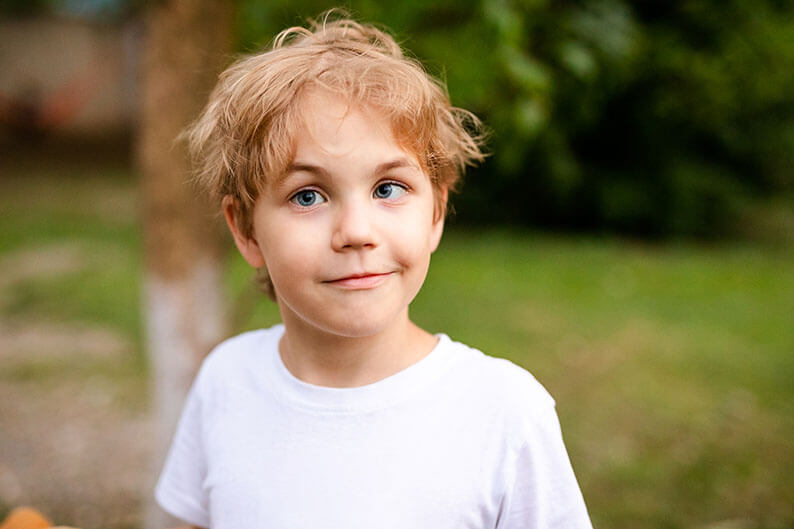Strabismus/Pseudostrabismus
What is Strabismus?
Strabismus refers to misaligned eyes. If the eyes turn inward (crossed), it is called esotropia. If the eyes turn outward (wall-eyed), it is called exotropia. Or, one eye can be higher than the other which is called hypertropia (for the higher eye) or hypotropia (for the lower eye). Strabismus can be subtle or obvious, intermittent (occurring occasionally), or constant. It can affect one eye only or shift between the eyes.
Strabismus usually begins in infancy or childhood. Some toddlers have accommodative esotropia. Their eyes cross because they need glasses for farsightedness. However, in most cases, the exact cause of strabismus is not well-understood. It seems to develop because the eye muscles are uncoordinated and do not move the eyes together. Acquired strabismus can occasionally occur because of a problem in the brain, an injury to the eye socket, or thyroid eye disease.
Pseudostrabismus
Pseudostabismus refers to a false appearance of misaligned eyes. Typically, psuedostrabismus manifests in such a way that the eye(s) appear to turn inward. Sometimes this is linked to facial features such as a broad, flat nasal bridge or asymmetrical inner eyelid corners. It may be difficult for a pediatrician to differentiate between true strabismus and pseudostrabismus; it is important that children are examined by an eye MD (ophthalmologist).
Children and Strabismus
When young children develop strabismus, they typically have mild symptoms. They may hold their heads to one side if they can use their eyes together in that position. Or, they may close or cover one eye when it deviates, especially at first. Adults, on the other hand, have more symptoms when they develop strabismus. They have double vision (see a second image) and may lose depth perception. At all ages, strabismus is distressing. Studies show that school-age children with significant strabismus often have self-image problems.






